Basilica of Saint John, Selcuk, Turkey
In this post we continue our exploration of western Turkey with Adventures Abroad in the Ephesus area by visiting sites sacred to both the Christian and Islamic religions followed by an unscheduled visit to the house of the Virgin Mary. As an added bonus we get to gaze upon another sacred site, this one dedicated to the Greek goddess Artemis and once one of the Seven Wonders of the Ancient World. Please join us as we visit these marvels starting with the Mosque of Isa Bey and then the Basilica of Saint John.
We are in the small coastal city of Selçuk which has an amazing array of things to see spanning a period of over 4,000 years that collectively constitute the UNESCO World Heritage Site of Ephesus, the fourth one we have visited on this trip. We began our day by visiting the small, but very interesting Ephesus Museum in the centre of town. Next we are headed a very short distance to the Mosque of Isa Bey.
The Mosque of Isa Bey
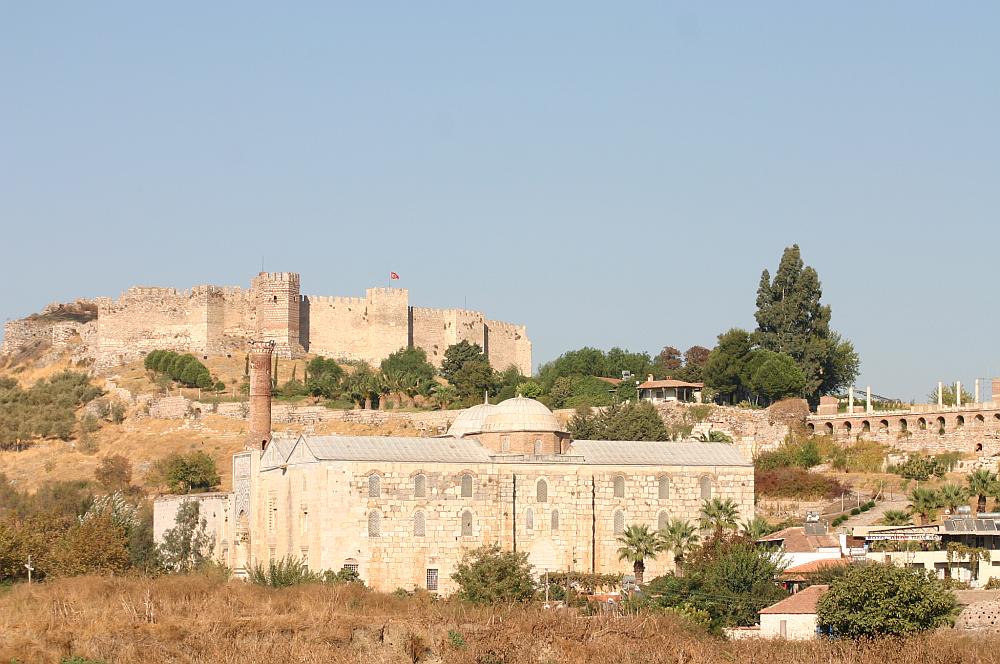
This public domain photograph which I found on the internet is truly remarkable. In the foreground is the Mosque of Isa Bey which dates from the 14th century. In the background is the Byzantine Ayasuluk Castle built on a hill where Hittite and Mycenaean artifacts have also been found. On the right hand side are the remains of the Basilica of Saint John built in the 6th century. Standing on the spot where you see the columns of the basilica you can look down at the site of the Temple of Artemis and if that’s not enough, from the top of the hill you can look over to the Roman city of Ephesus which is actually the biggest tourism draw in the Ephesus area. If there is any place in the world with a greater number of important archaeological sites spanning such a number of years and civilizations, I have yet to see it. So let’s get going.
This is a bust of Isa Bey with him looking directly at the mosque he had constructed in 1374-75 and seems to be the most notable thing he did in his life as I can find next to nothing about the man himself. I can also find no reason why the mosque was effectively abandoned and left to become a ruin although it has been partially restored.
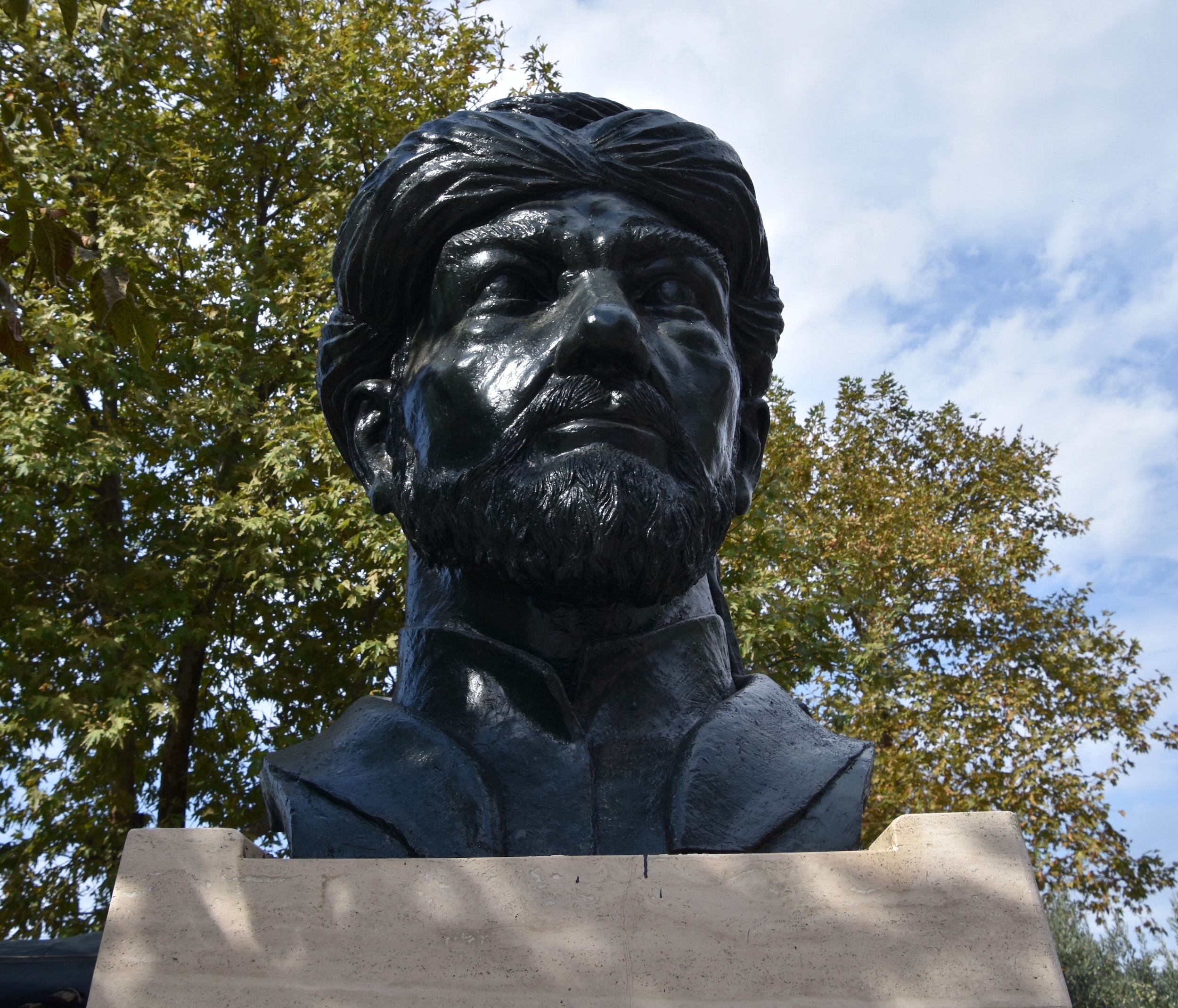
The mosque was designed by a Syrian architect and is apparently modelled on the great mosque of Damascus. This is the entry way to the courtyard with a distinct honeycomb pattern.
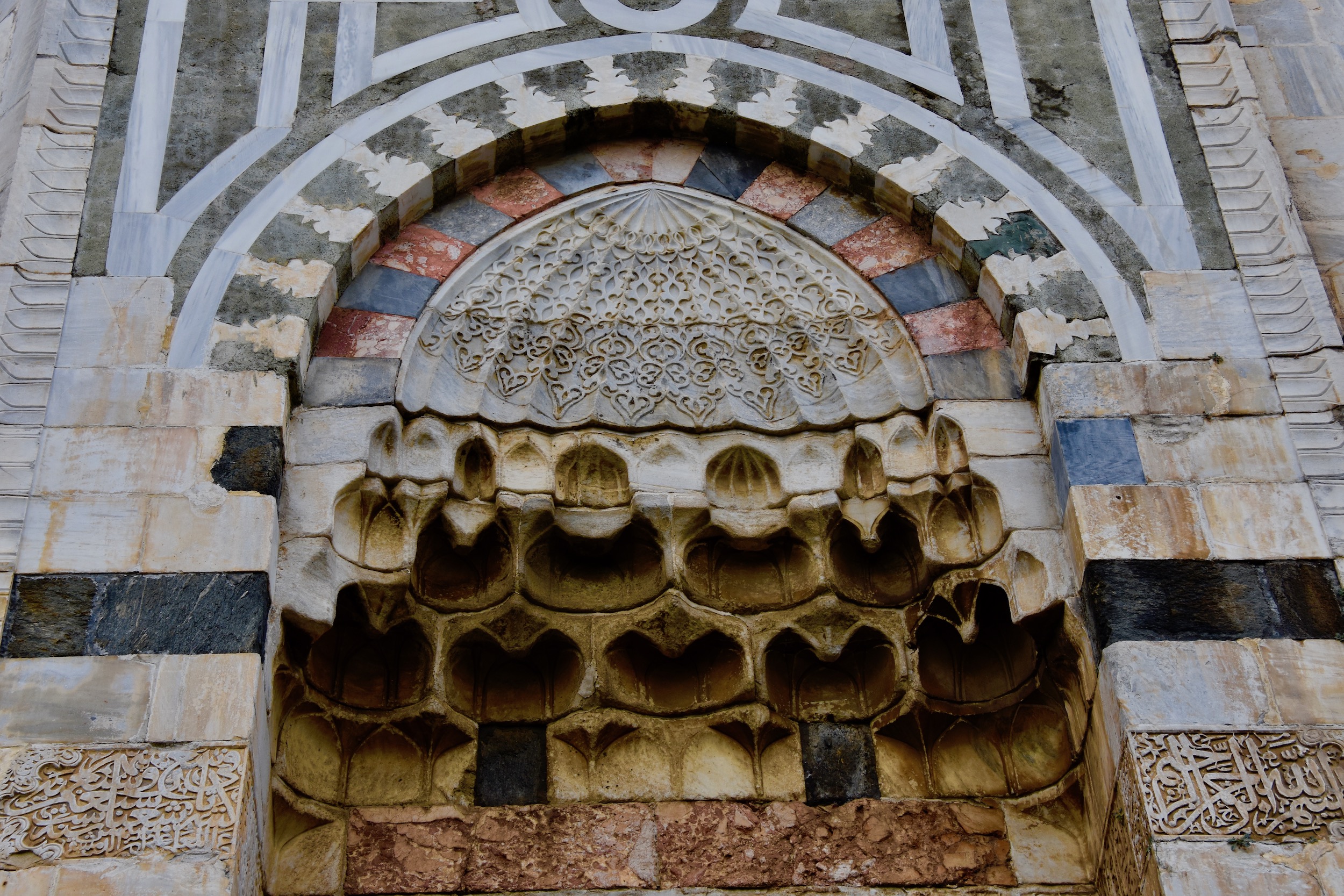
The most interesting thing I found about this mosque was this row of Muslim headstones. Dead men wear turbans and the women don’t.
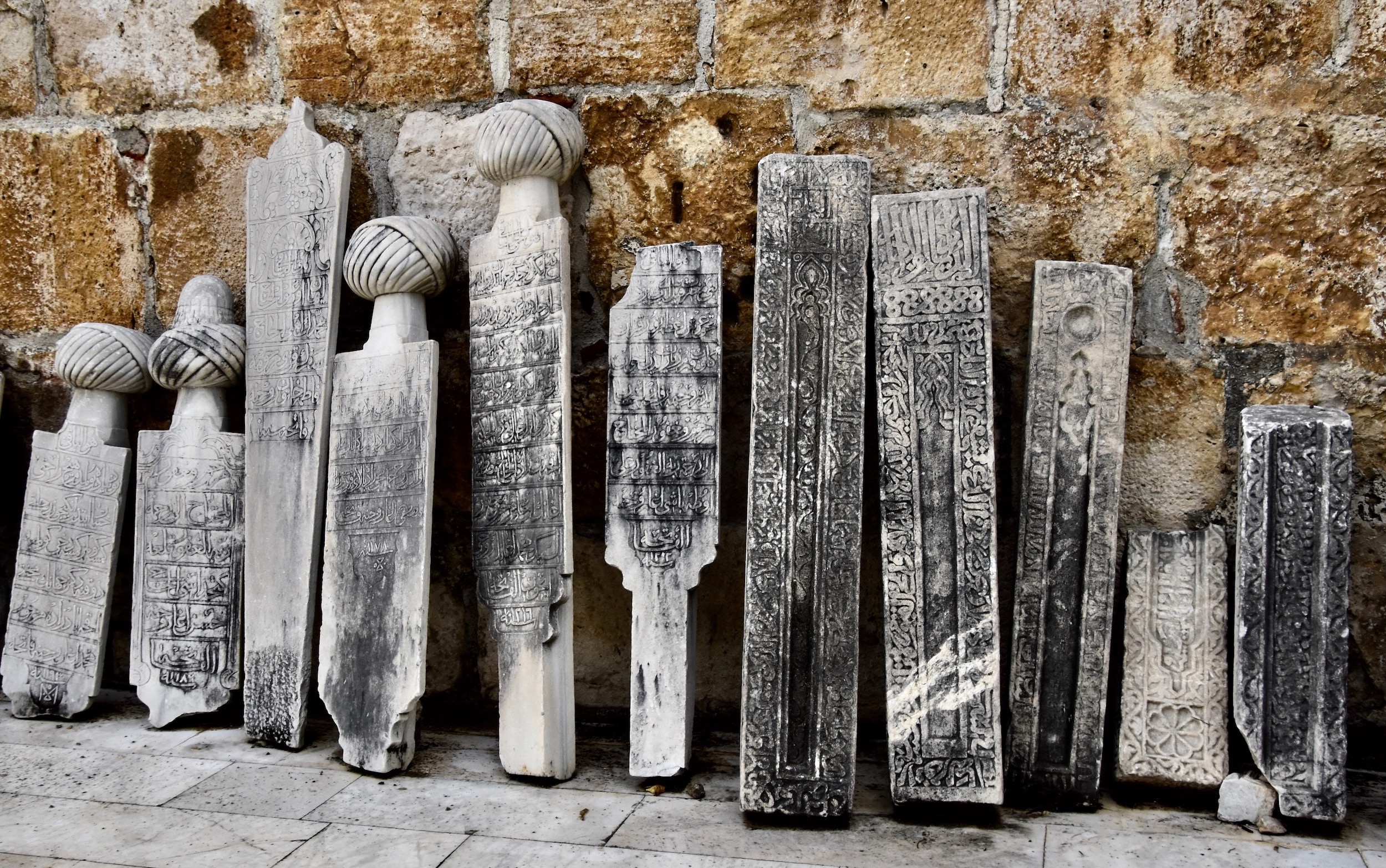
This is a glimpse of the interior with a pillar that once stood in the Temple of Artemis or so the legend goes.
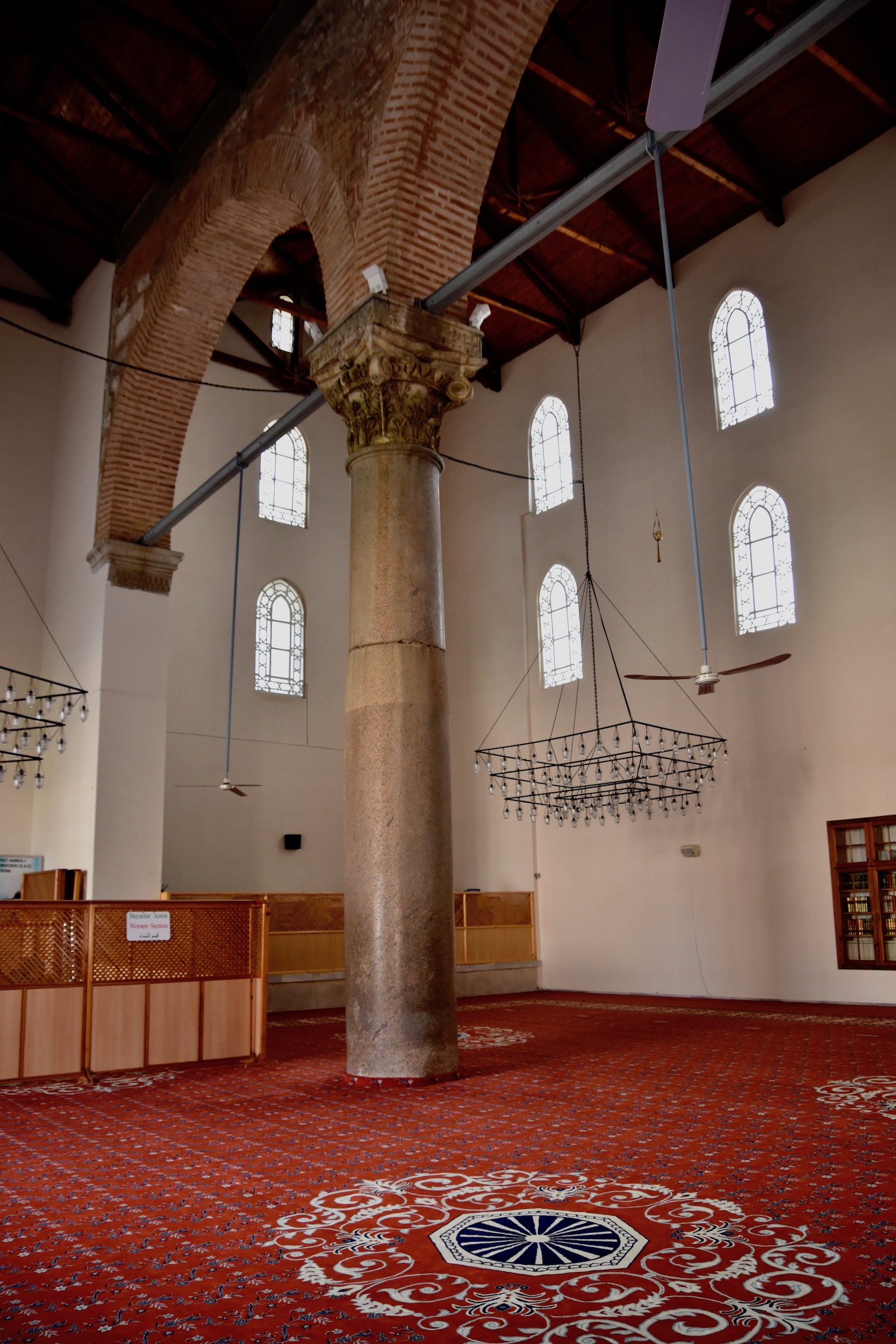
While the others were poking around the interior I took a walk around and noticed just how close we were to the Basilica of Saint John whose ruins overlook the mosque, something I would have thought would have been unacceptable to many Muslims. Maybe that’s why the mosque was abandoned.
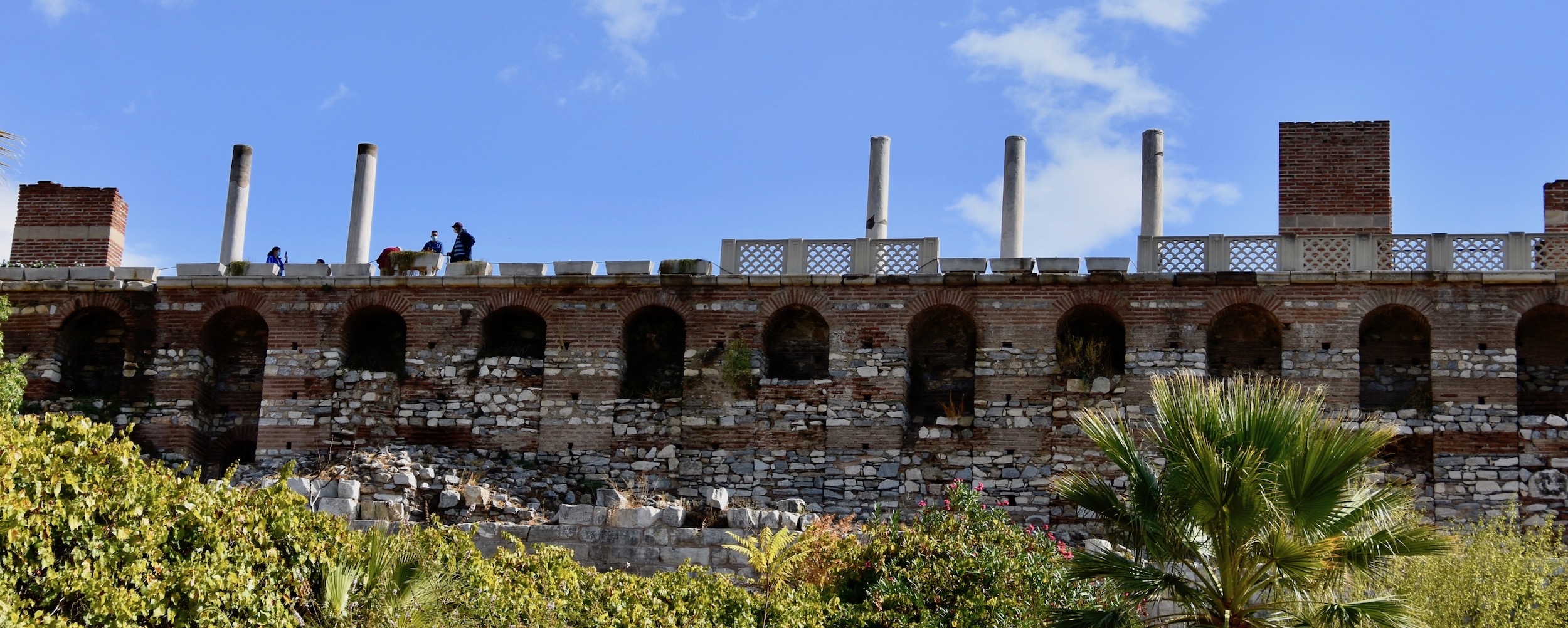
I climbed up some steps and had this view of group as they exited the mosque.
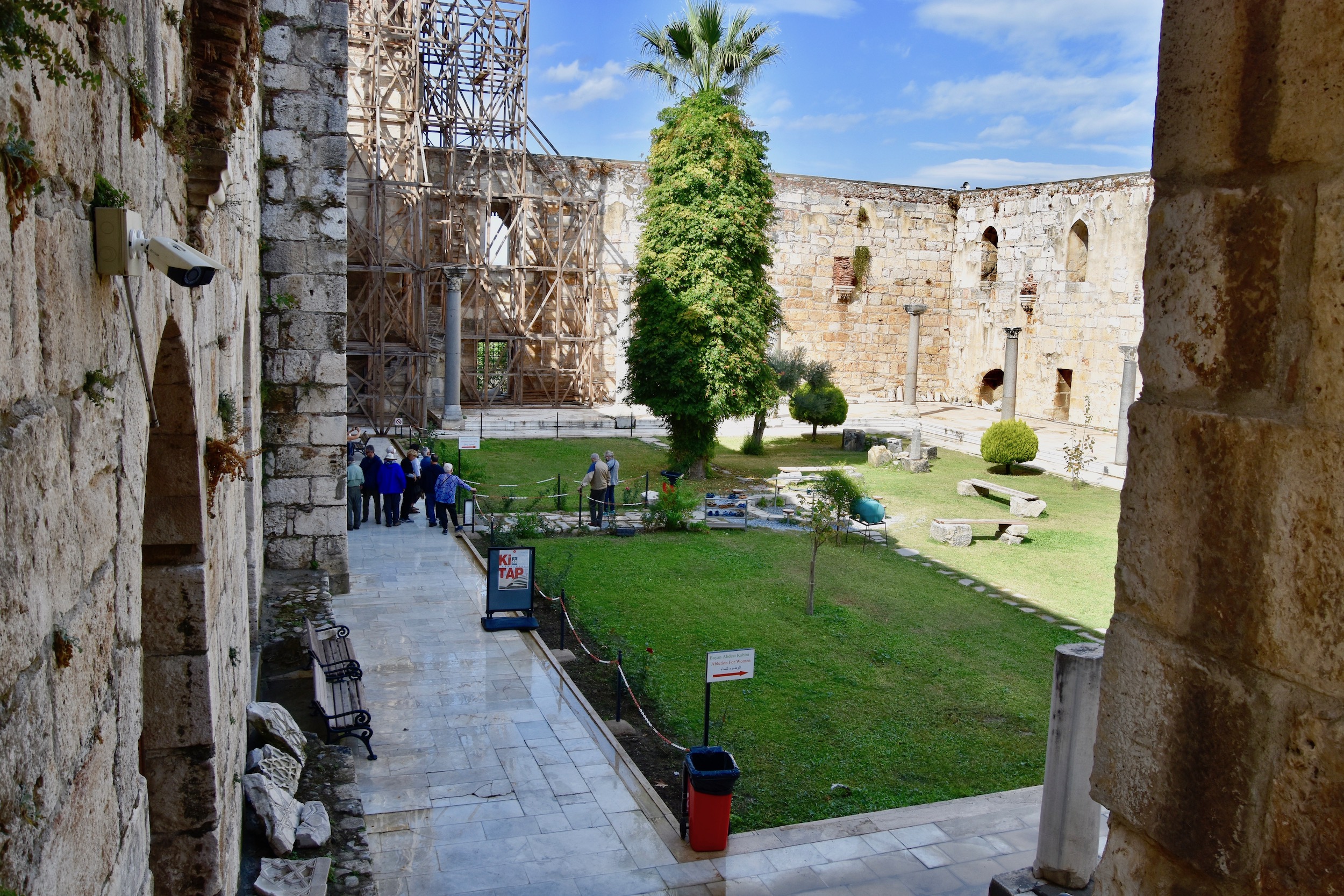
Although you wouldn’t know it from the blue skies in the photo above, we did have a very brief shower which brought out a profusion of Turkish snails which, believe or not, are one of the favoured species for escargot. Umm, doesn’t he look tasty?
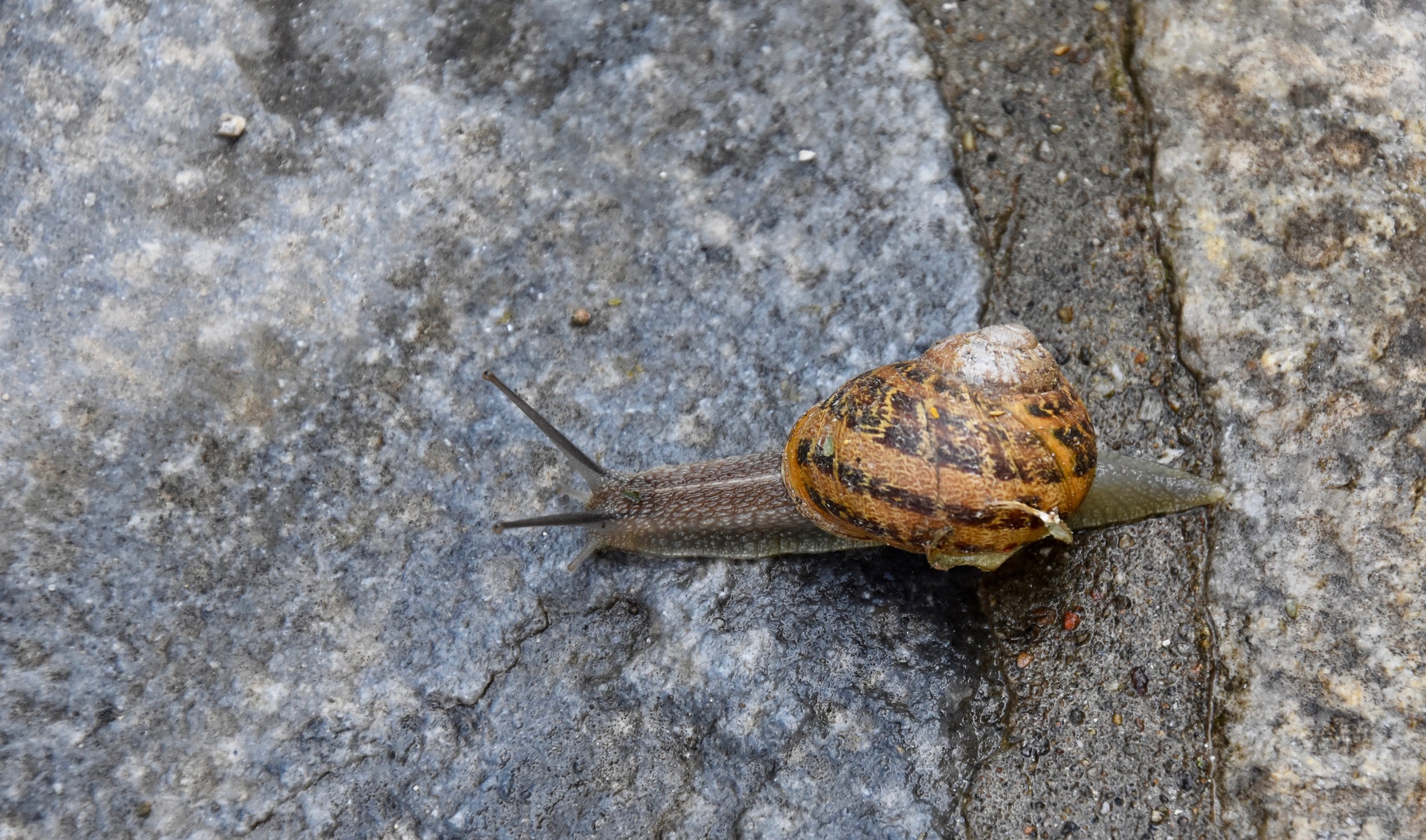
The Basilica of Saint John
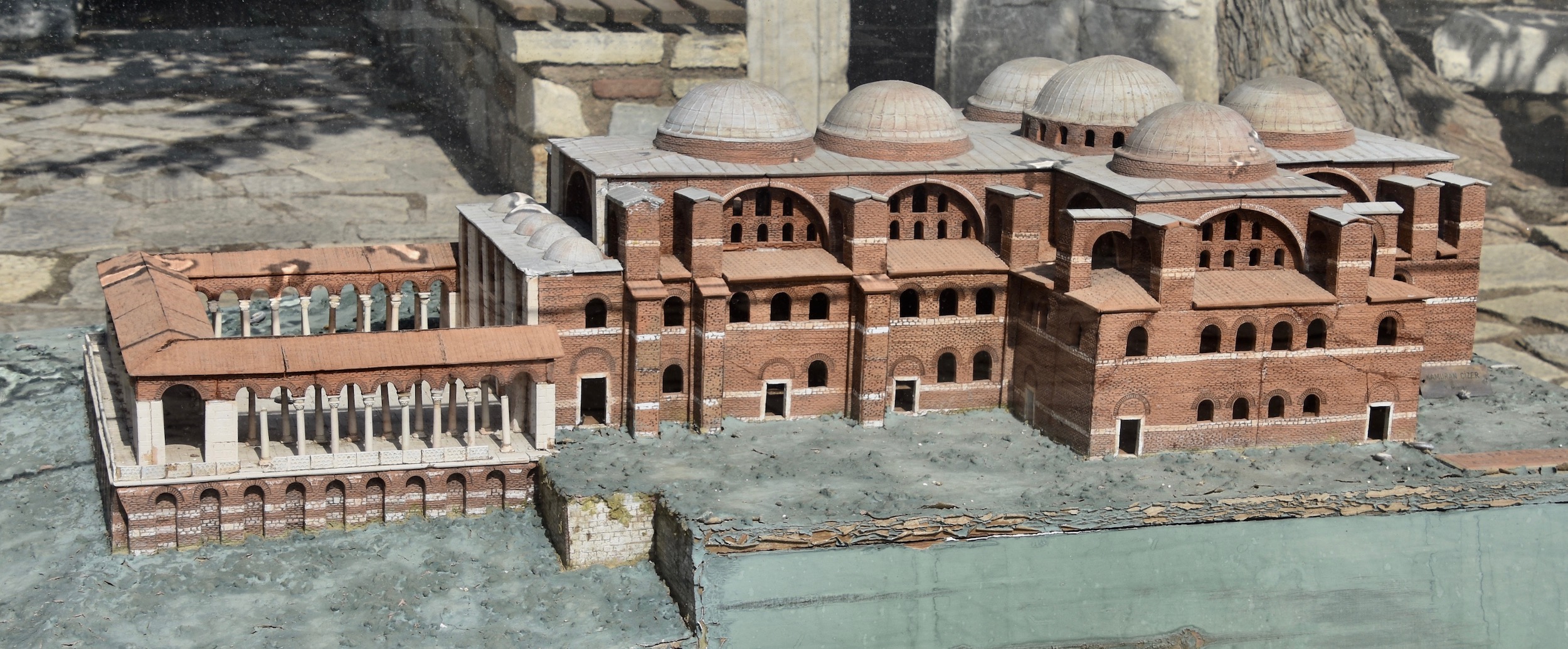
This is a model of the Basilica of Saint John which was built by a guy we are quite familiar with by now – Justinian I who we met while touring his greatest accomplishment, the Hagia Sophia in Istanbul. The Basilica was modelled on another great church in Constantinople which sadly is long gone, the Church of the Holy Apostles which was second in importance only to Hagia Sophia. The Ottomans had it levelled shortly after conquering the city to make way for the Fatih Mosque which now occupies the site. Thank goodness they didn’t do the same to Hagia Sophia.
So why did Justinian decide to build such a grand structure on the side of a barren hill in a Roman city that was rapidly falling into ruin? Well, the name kind of gives it away. It was believed since at least the 2nd century that the apostle John lived out his long life in Ephesus and was buried in a mausoleum on the hill. There had been a small church or shrine over the alleged gravesite for at least a couple of hundred years before Justinian had work started on the Basilica of Saint John in 548. Interestingly it took over twice as long to build as Hagia Sophia, not being finished until 565.
Now in case you are not aware here are a few of the ‘facts’ surrounding Saint John who was often called The Divine. John along with his older brother James became Jesus’ first apostles. He is credited with writing the Gospel of Saint John which differs significantly from the other three gospels. He is also credited with writing the ultimate book of the New Testament, the Revelations which came to him during a period of exile on the Greek island of Patmos. Yes, this is the guy who invented ‘The Apocalypse’ and its four horsemen. On top of all that, as we shall see later in this post, he is credited with taking care of the Virgin Mary in her final days on earth. Lastly, he is the only apostle who was not martyred and is often credited with living to be a centenarian. So John was a pretty big deal in this part of the world.
With that background let’s explore the wreckage of this once great edifice, which like the Isa Bey mosque next door, apparently just slipped into a gradual state of disrepair and was abandoned long before the Ottomans captured this part of Turkey.
This is the original entrance, long called the Gate of Persecution because of a relief above the lintel on the left hand side that purportedly showed an early Christian being martyred.
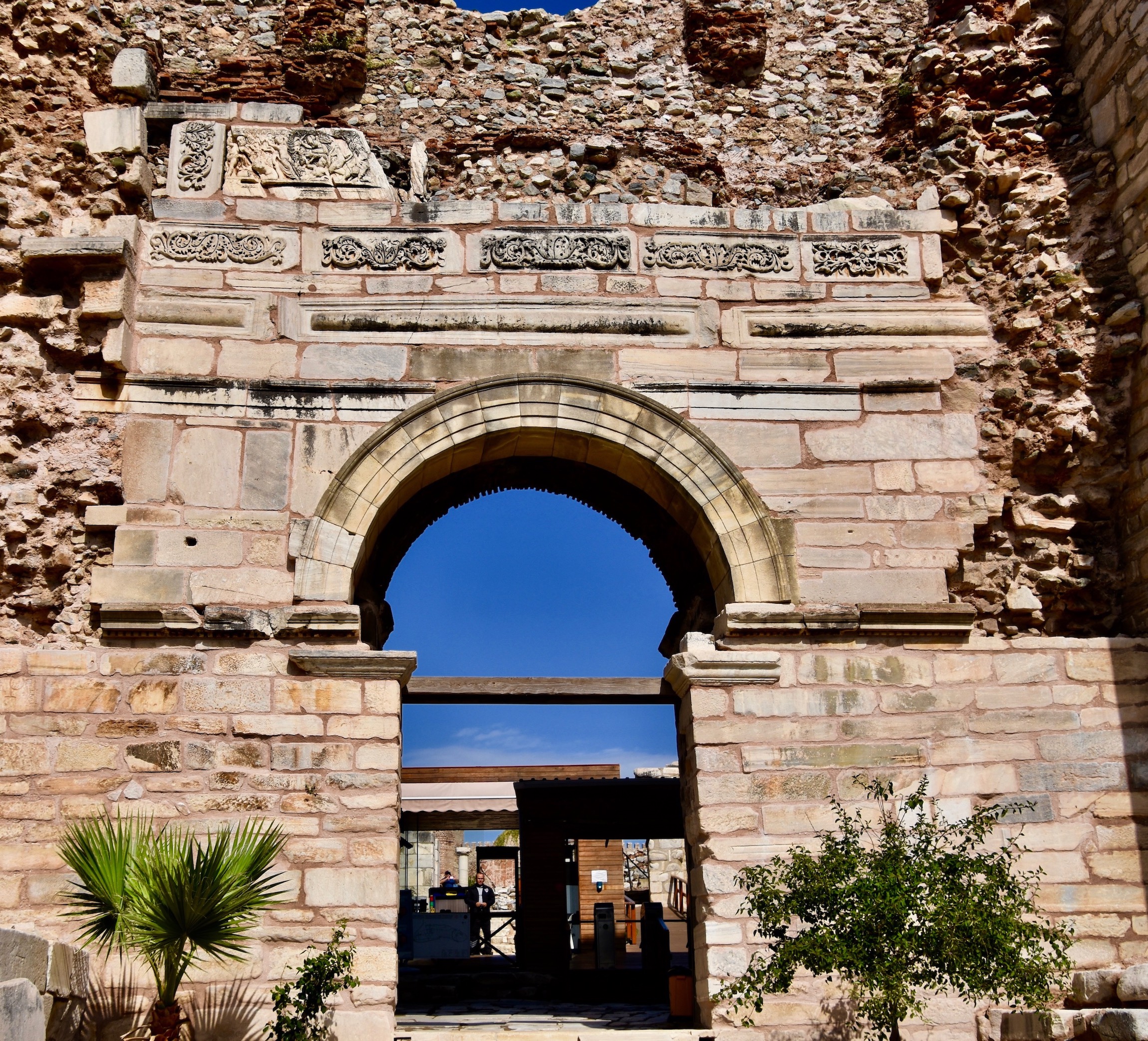
However, if I get out the handy zoom lens and zero in on that place this is what I see. As our guide Yasemin explains, this is no Christian persecution, but something that Homer says took place almost 2,000 years before the Christian era. It has been definitely identified by archaeologists as a scene of Achilles slaying Hector. Ephesus provided a veritable treasure trove of ready made scenes from antiquity that could be reinterpreted as early Christian mythos. You might just call them ‘alternate facts’.
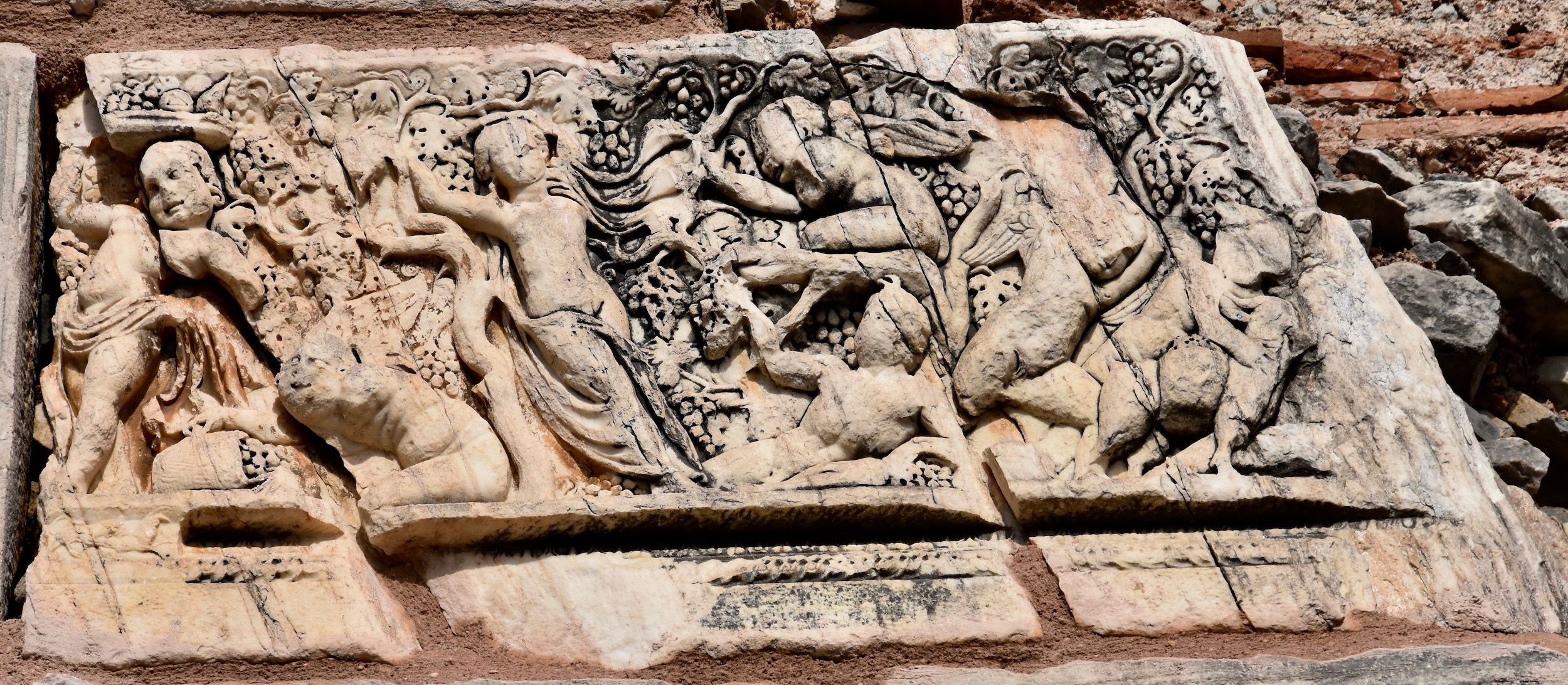
In fact, looking around what’s left of the Basilica of Saint John you see far more Roman and Greek items than those you would normally associate with a church.

Many of these have been repurposed by adding Christian symbols to them, like this cross on a capital.
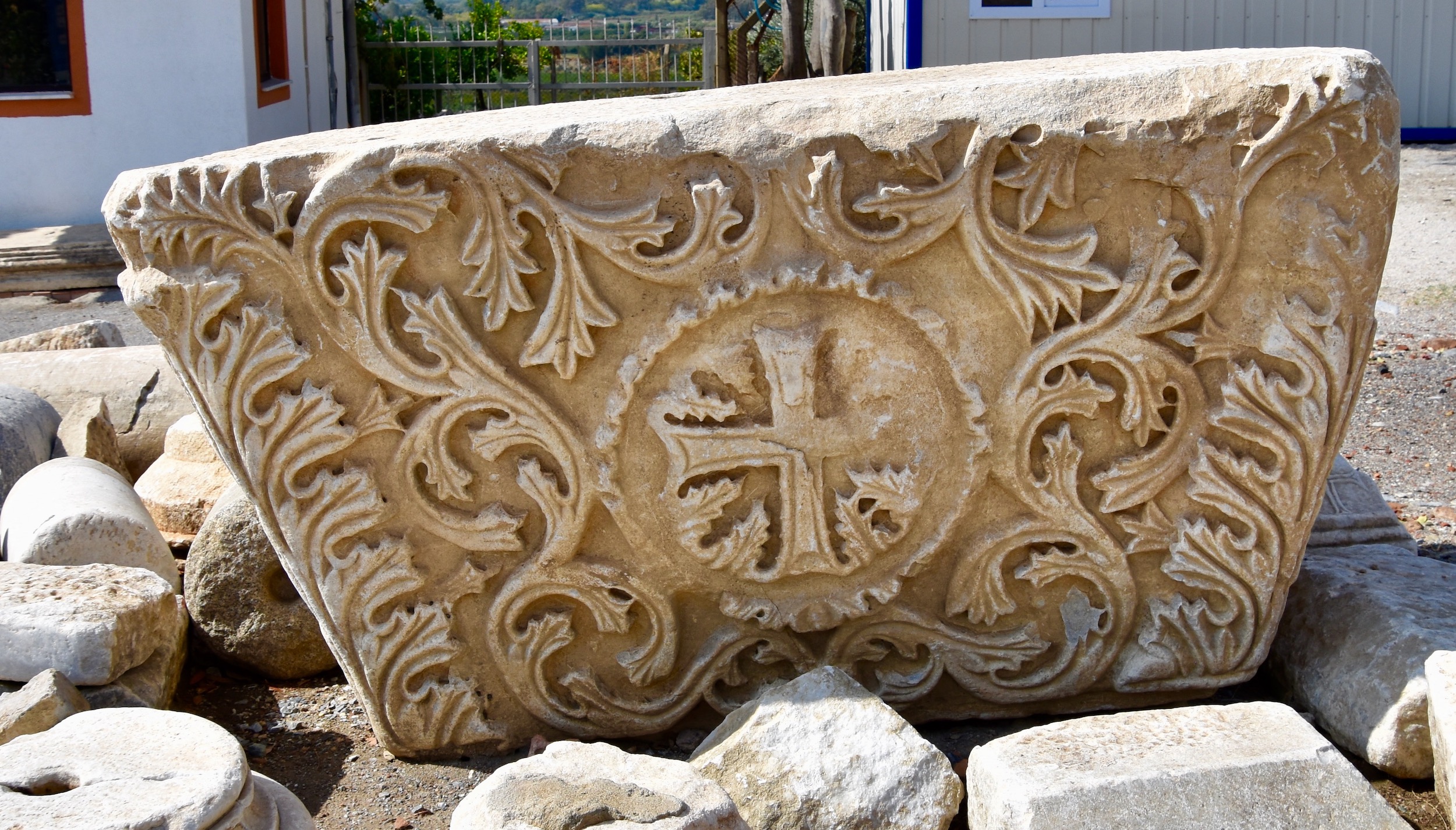
Or this.
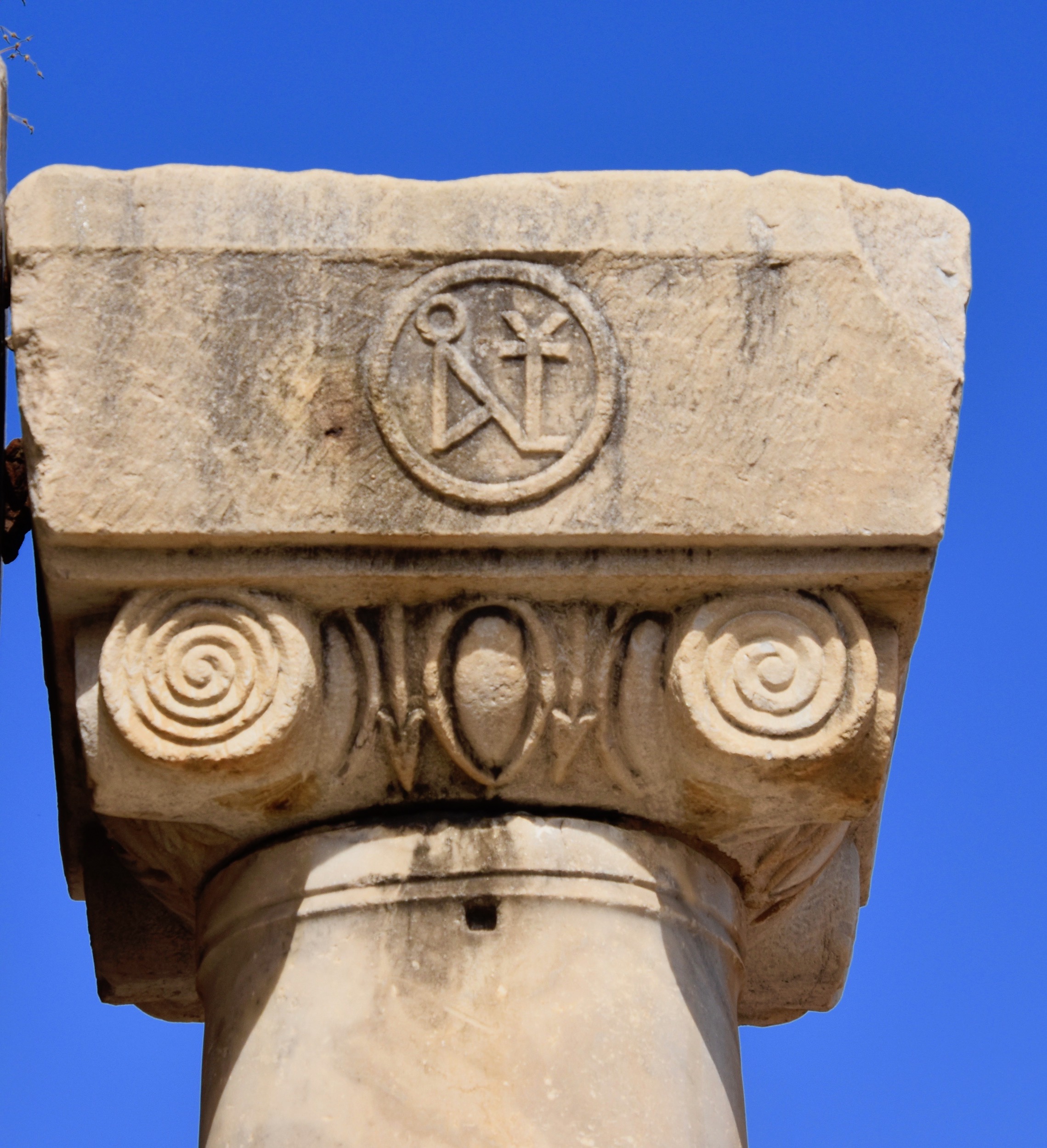
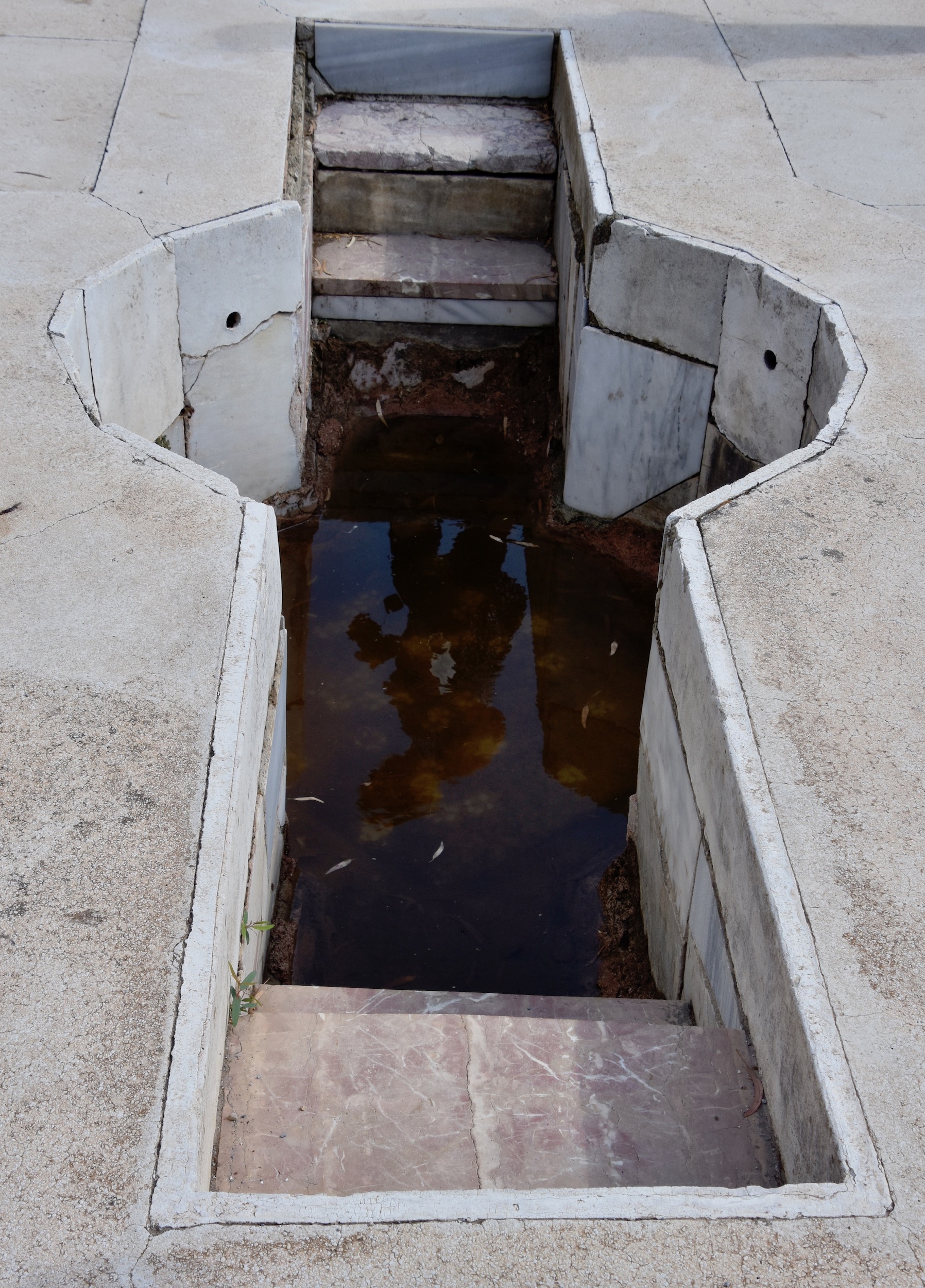
You really had to want to be become a Christian to walk into what the Basilica of Saint John used as a baptistry.
If Yasemin has not explained its importance I would never have guessed what this was.
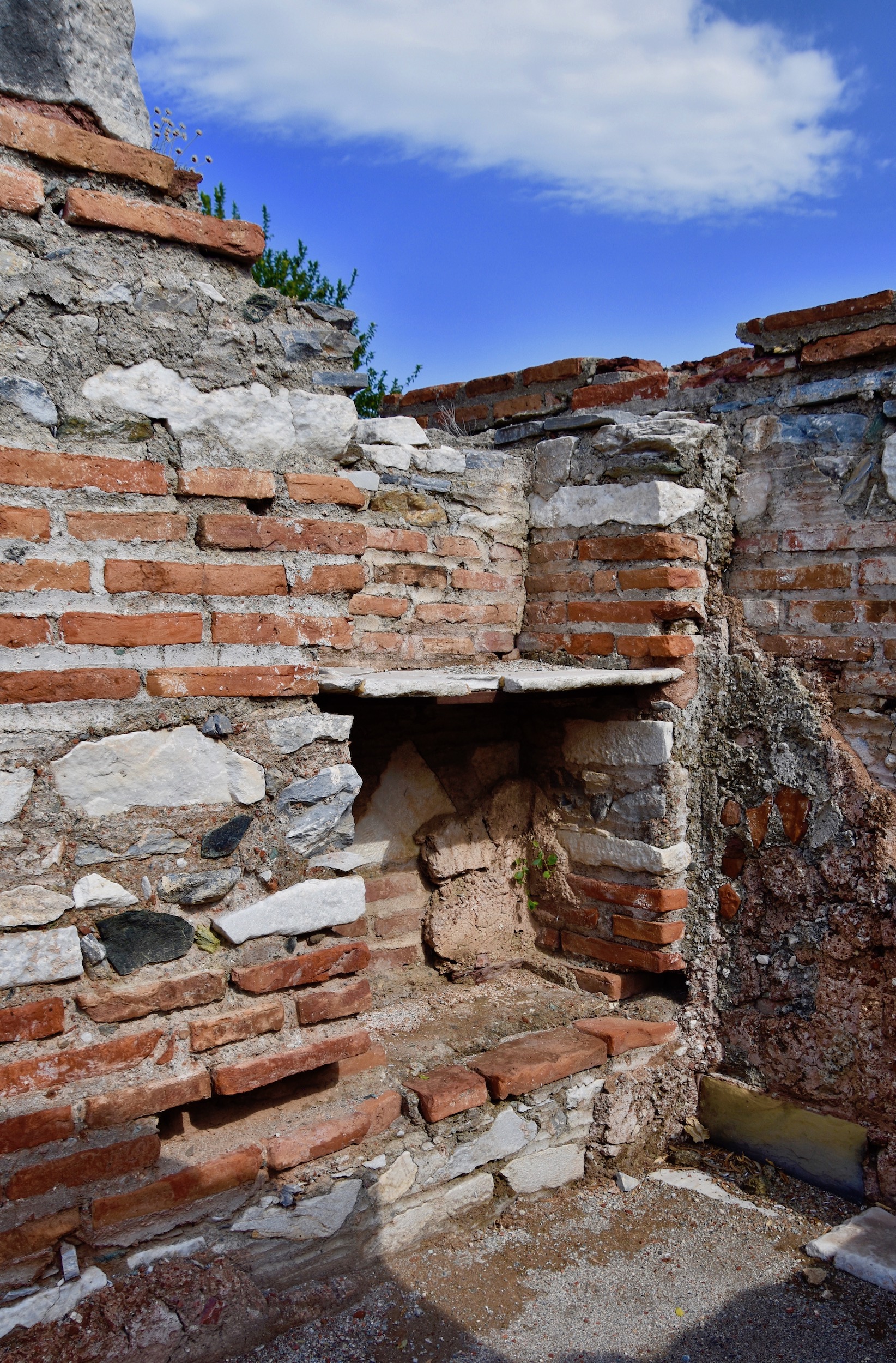
Well I would have guessed – an oven, a chimney, a small altar? Wrong, wrong and wrong again. It’s actually an early version of a safety deposit box. In the days when the Basilica of Saint John was active most people lived in wooden structures and their valuables could easily be lost in a fire or stolen by thieves. It was the practice of the church to store the valuables of the parishioners for them in secure places like this. I have to confess I have never come across one of these before.
This is the reason that for hundreds of years the Basilica of Saint John and its predecessor drew pilgrims from all over the Christian world for at least a thousand years. They would collect dust in a souvenir flask and take it back home where it was capable of creating miraculous cures, sort of like pixie dust. It is the final resting place of Saint John.
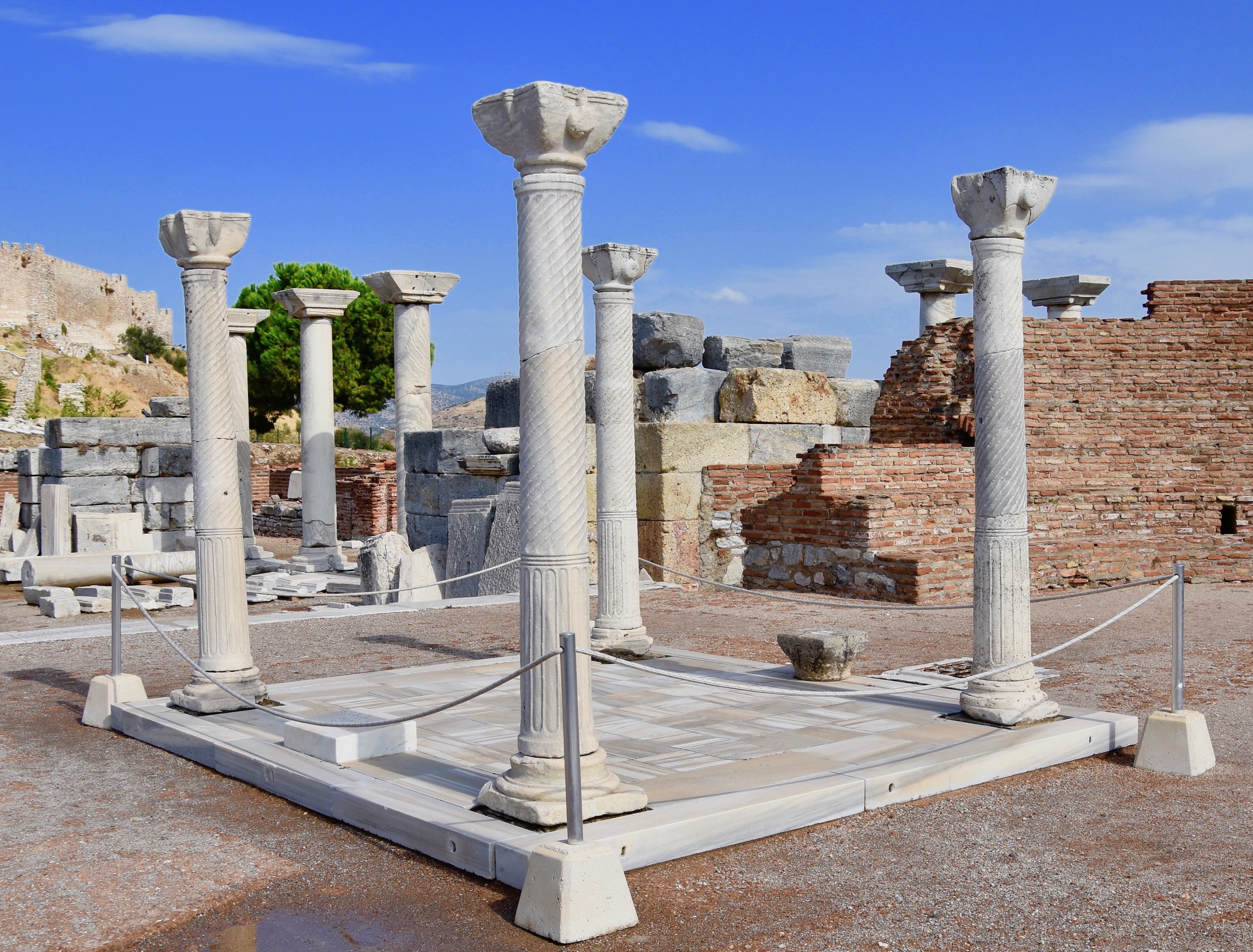
Or is it? Legend has it that Constantine had the tomb opened in the 4th century and there was nobody in it, leading to the claim that like Jesus and his mother, John had been bodily taken up to heaven. As I noted, he was the only apostle not martyred and thus the only one for whom you won’t find any alleged ‘relics’.
Despite its appearance today the Basilica of Saint John is still a great place to visit.
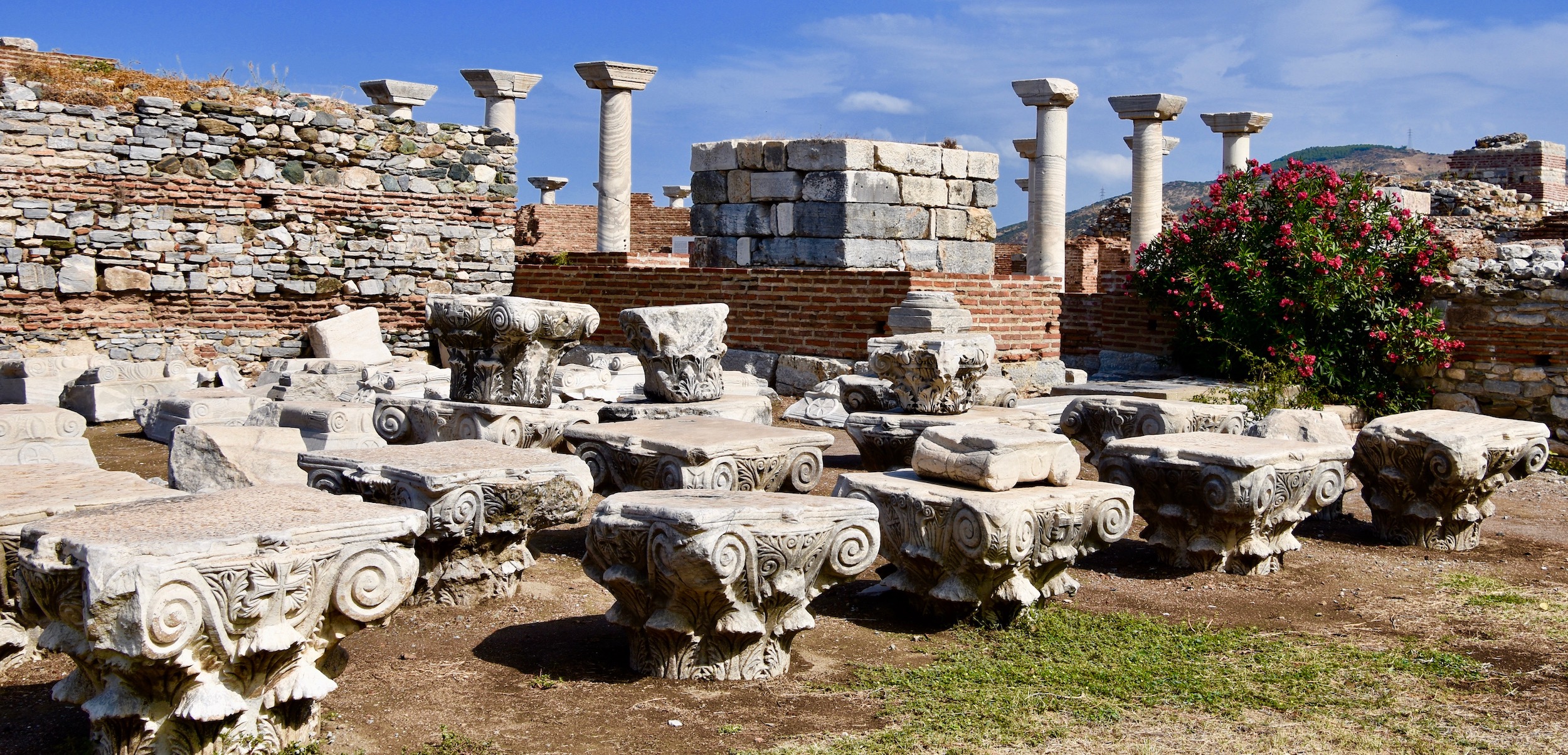
Looking up you get a great view of the Byzantine castle.
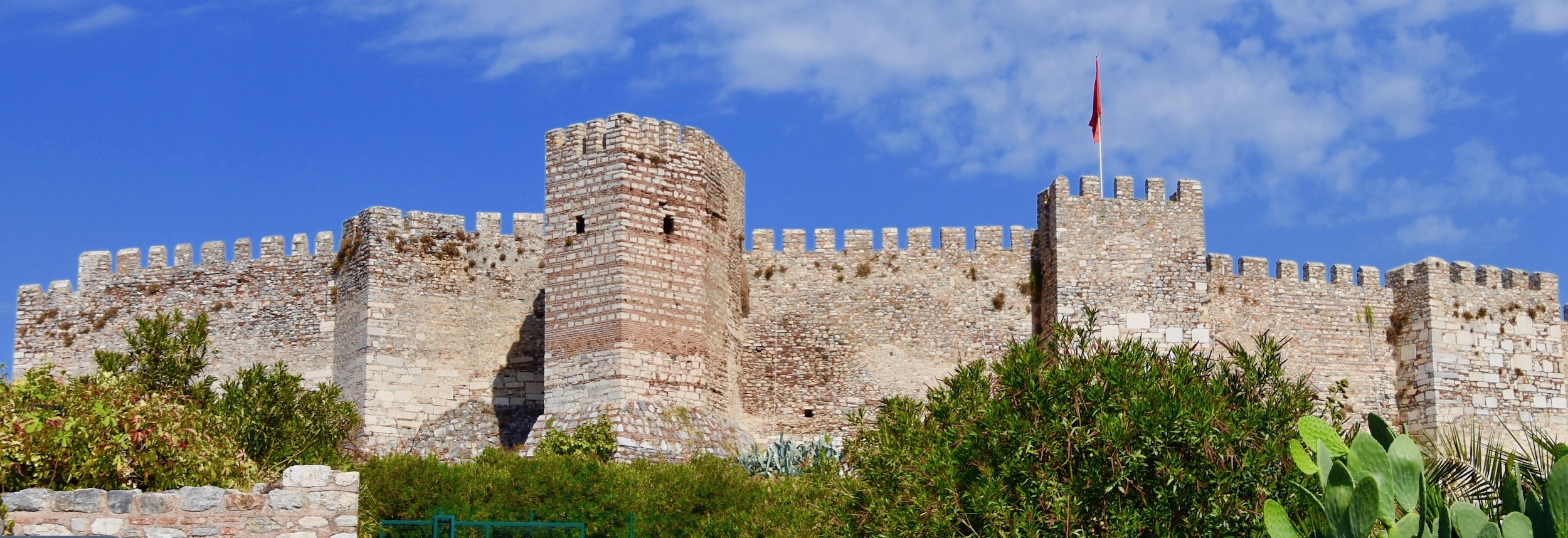
And looking down, one of the saddest sights we’ll see on this tour. Folks that is all that remains of the great Temple of Artemis, one time wonder of the world. According to the gnostic text The Acts of John, John went into the temple and prayed causing the altar to explode and half the building to collapse, killing the main priest. One might call it an act of vandalism using prayer instead of pillage. The irony of course is that while I gaze down at the temple ruins, my back faces the ruins of the Basilica of Saint John.
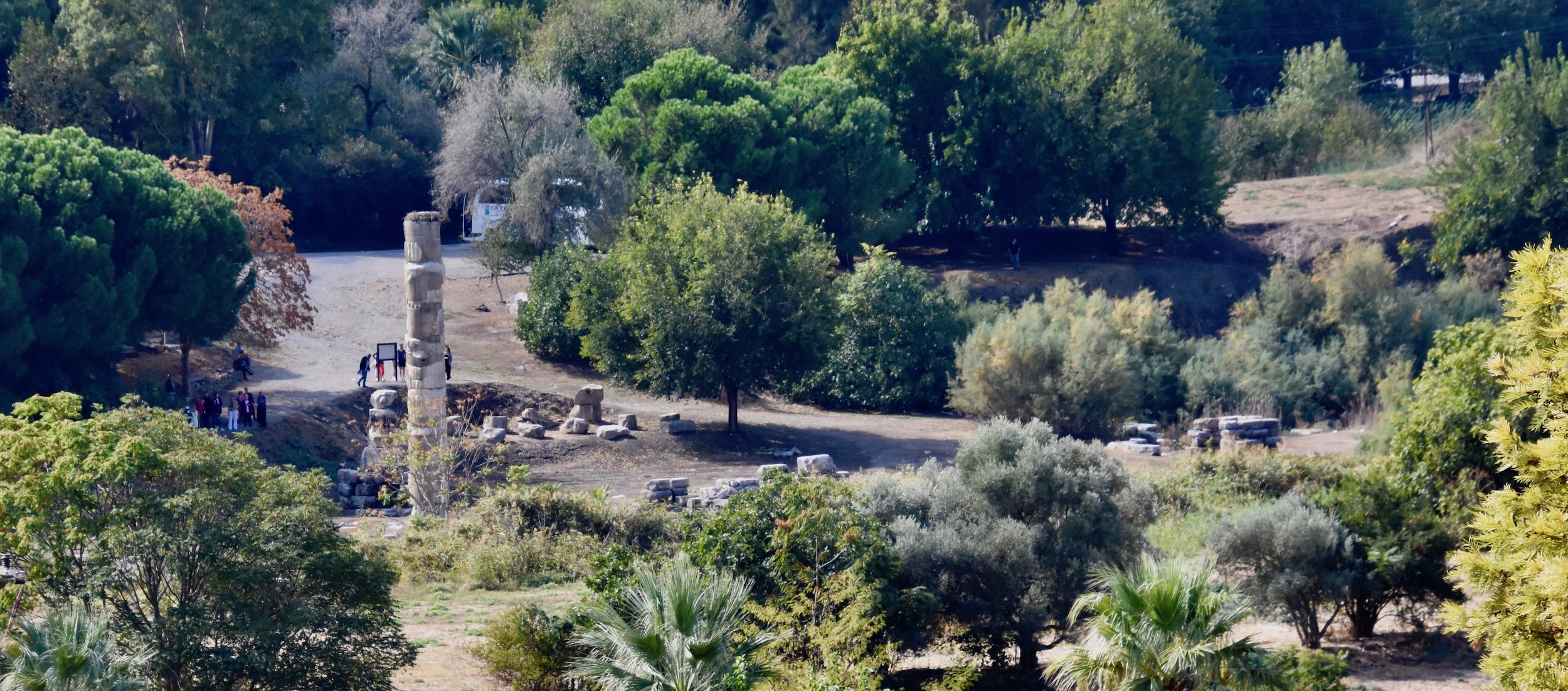
We have one more stop to make before I end this post, the House of the Virgin Mary.
The House of the Virgin Mary
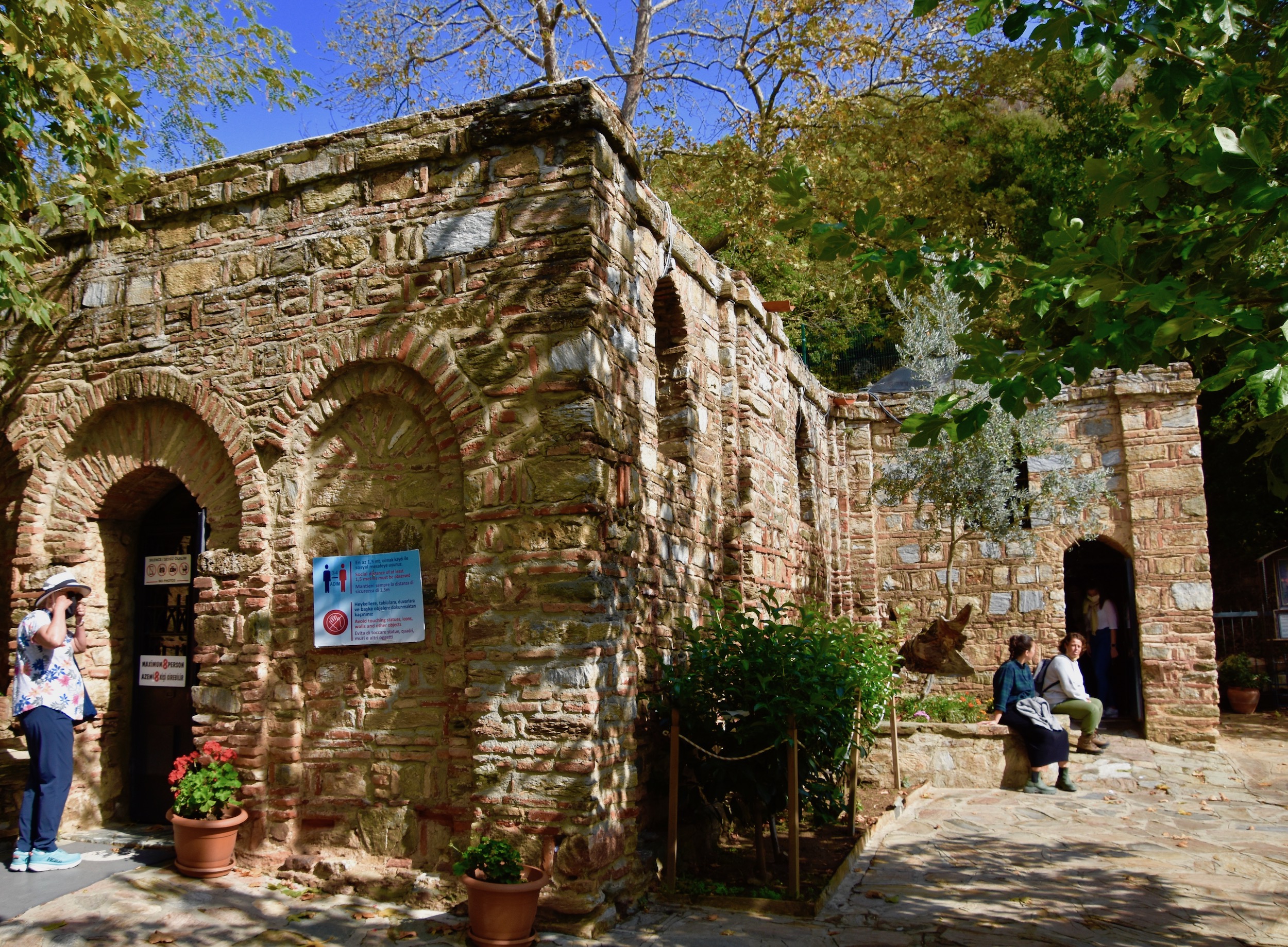
I have to admit that the first time I learned about the House of the Virgin Mary my reaction was something like, “You gotta be kidding me.” I mean the Virgin Mary is a figure so mystical that the very idea that she could have had a corporeal presence seems almost inconceivable. And yet ever since a German nun in the 19th century by the name of Anne Catherine Emmerich had a vision about the life of the Virgin Mary after Jesus’ death and identified a house on a mountainside not far from Ephesus as her home, people have been flocking to the place, including three Popes.
This was not on the trip itinerary, but one of our group requested that we make the detour up the very narrow mountain road to this pilgrimage site and Yasemin readily agreed. I had been here before, but had no problem with this detour. I had been accommodated at Gallipoli and was glad that this request was granted as well.
Needless to say the actual house, while old, is nowhere near old enough to have been the Virgin’s home, but archaeologists have found portions of an older dwelling that could date as far back as 2,000 years. Legend has it that Jesus, knowing of his impending death, asked John to look after his mother and after the crucifixion he brought her to Ephesus and installed her in this remote location where she lived until her ascension into heaven. While I am not a religious person, neither am I one to denigrate those who do have faith, unless they use it as a pretext to do things like start a war or persecute others.
The bottom line is that this is a very pleasant place to visit in lovely forested mountainside location. This is the so-called wishing wall where believers leave prayer messages that they hope will get an answer from above. The last time I was here it was completely covered so I presume that that someone must remove them from time to time. Interestingly there was a sign that said not to leave masks, but it has definitely back fired as there were dozens of masks. I suppose one of the most common requests these days is to recover safely from Covid or not get it in the first place.
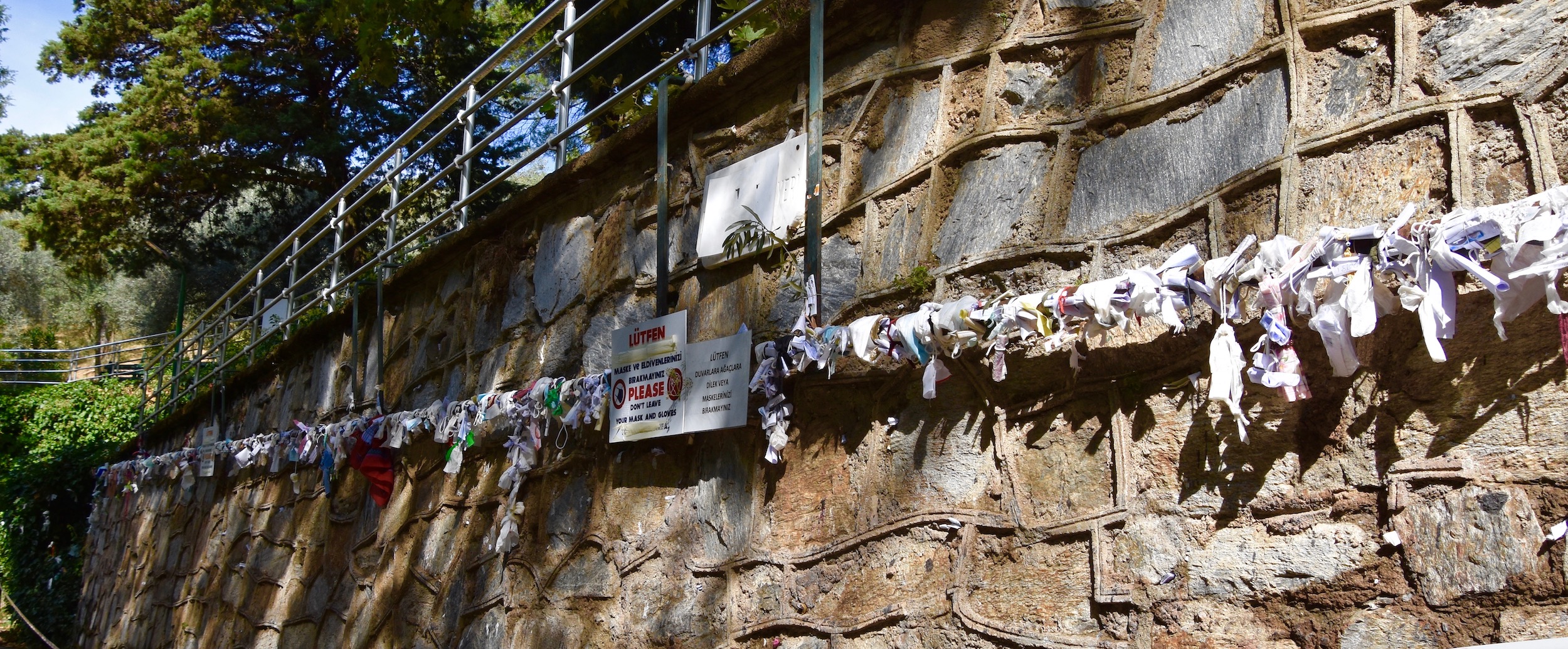
That concludes our visit to more great sites around Selcuk, but not our visit to the area. Join our group in the next post as we visit the ruins of the great Roman city of Ephesus.

